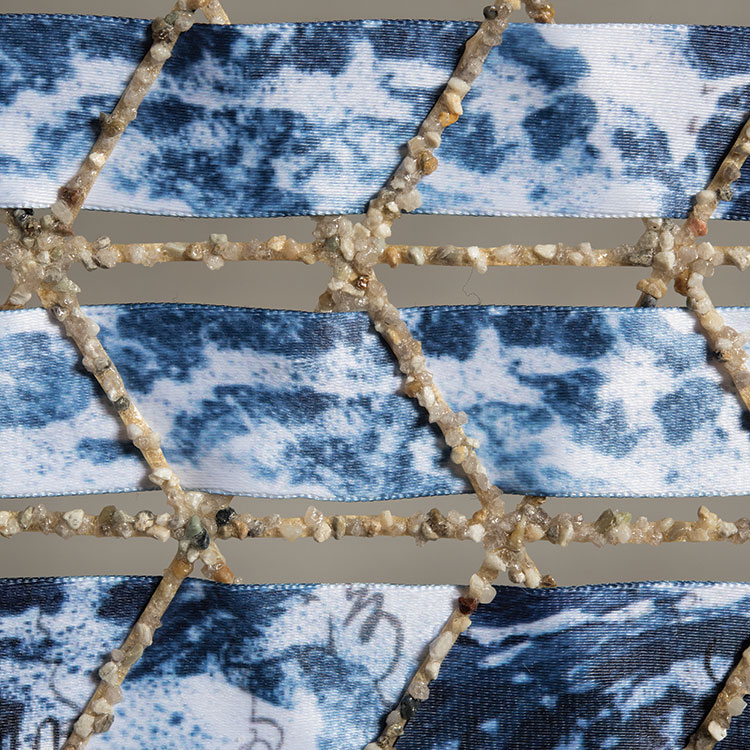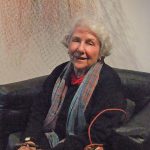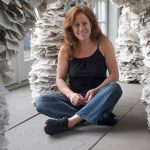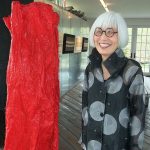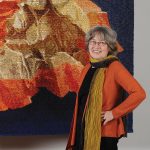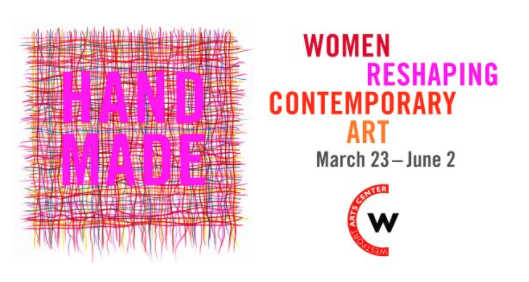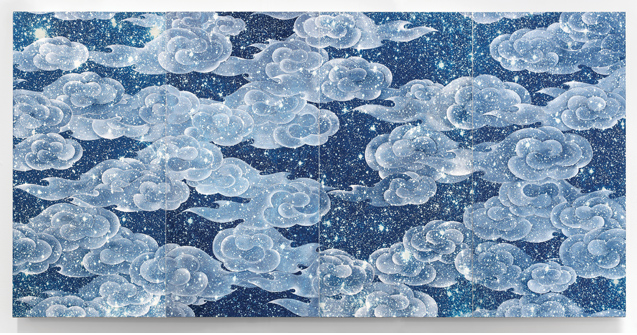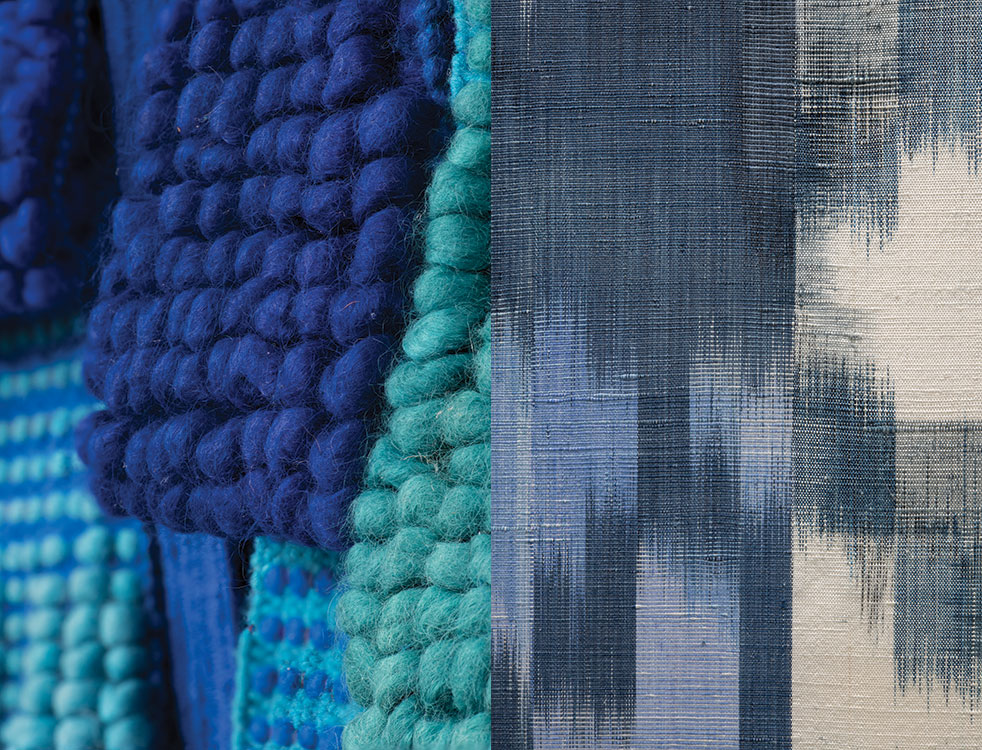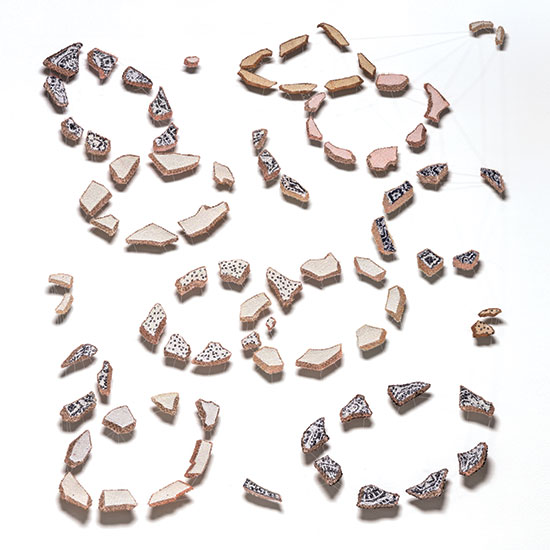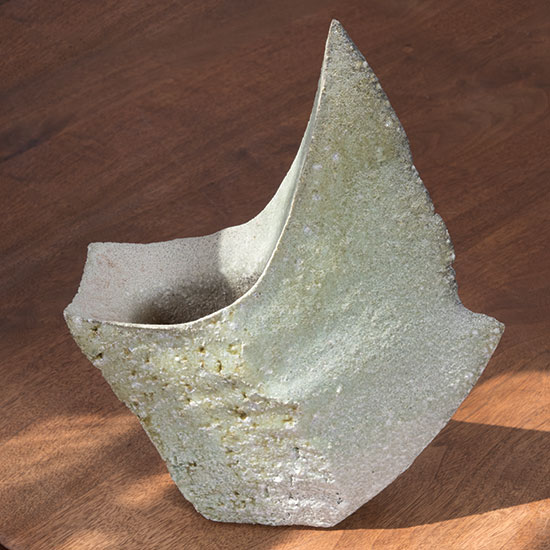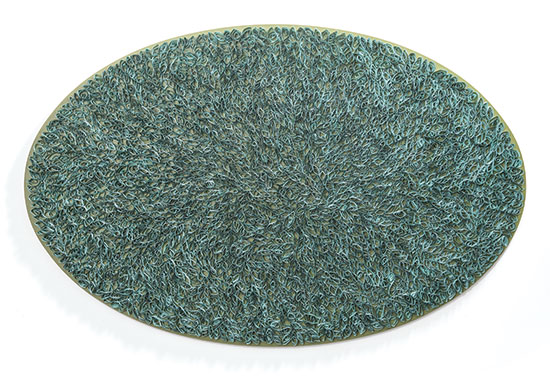The Artists Reception and Opening for Blue/Green: color/code/context occurs this Saturday at browngrotta arts, 276 Ridgefield Road, Wilton, Connecticut 06897. Eleven of the participating artists will be in attendance, enhancing what is always an energizing opportunity to experience our annual Art in the Barn event. Keiji Nio and his family are coming from Japan, Pat Campbell from Maine, Wendy Wahl from Rhode Island, Kiyomi Iwata from Virginia, Norma Minkowitz and Helena Hernmarck from Connecticut and Polly Barton, John McQueen, Nancy Koenigsberg, Lewis Knauss and Tamiko Kawata from New York. Wendy Wahl’s work is made of blue Encyclopedia Britannica pages; John McQueen used plastic bottles — a departure for him. Norma Minkowitz has created a detailed and magical stitched drawing and Lewis Knauss a work of pale, pale green and natural reed and twigs. Join us from 1-5 pm to see their work and that of 50 more artists. The artists will be available throughout the Barn, to answer questions about their work, their favorites or about the work of others. They’ll be wearing name tags — feel free to say hello. For more info: http://www.browngrotta.com/Pages/calendar.php; 203-834-0623. Or visit us during the week — Sunday April 29th – Sunday May 6th, 10-5 pm.
- John McQueen
- Nancy Koenigsberg
- Lewis Knauss
- Wendy Wahl
- Pat Campbell
- Norma Minkowitz
- Kiyomi Iwata
- Helena Hernmarck

